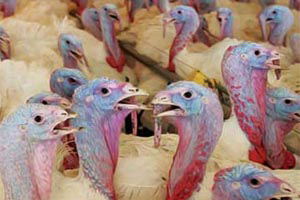Turkey genome project important for poultry industry

A project launched in 2008 to map the entire turkey genome is nearing completion, with more than 95% of the genome sequence now in place.
The results of the current work, which has relied primarily on the use of next-generation sequencing (NGS) technologies, should prove valuable for studying and subsequently enhancing economically important traits in poultry, according to a recent article in Poultry Science that provides details about the project.
US annual production doubled
Intense genetic selection for increased growth rate, meat yield, and growth efficiency, has enhanced the turkey industry’s ability to roughly double its US annual production of turkeys over the last 30 years to almost 300 million birds, while supplying more value to consumers. During this same period of time, a number of economically challenging consequences have developed for producers. These include increased skeletal problems, cardiac morbidity, reduced immune response to some pathogens, and some instances of meat quality issues, among others – all issues that have been, despite years of effort, difficult to address through conventional approaches to breeding.
Finding solutions to these kinds of challenges associated with heavily-muscled birds has been arduous due to scientists’ limited understanding of the complex genetic factors underlying them. One benefit of the turkey genome project is that thorough knowledge of the genome sequence will provide a refined tool for improved understanding and, eventually, resolution of these issues.
Benefit poultry breeders
“Providing a complete turkey genome sequence will benefit poultry breeders and producers in terms of finding solutions to disease resistance and numerous other problems. It should also help improve nutrient utilization and reproductive success,” said Dr Rami A. Dalloul, lead author of the article and associate professor, Department of Animal and Poultry Sciences, Virginia Tech University.
In addition to benefiting the industry and consumers, the findings of the sequencing project will also help accelerate research in agricultural animal genomics. The close homology between the chicken and turkey genomes will enable knowledge of the latter to be used as a resource to fill in current gaps in scientists’ knowledge of the chicken genome sequence, noted Dr Dalloul.













